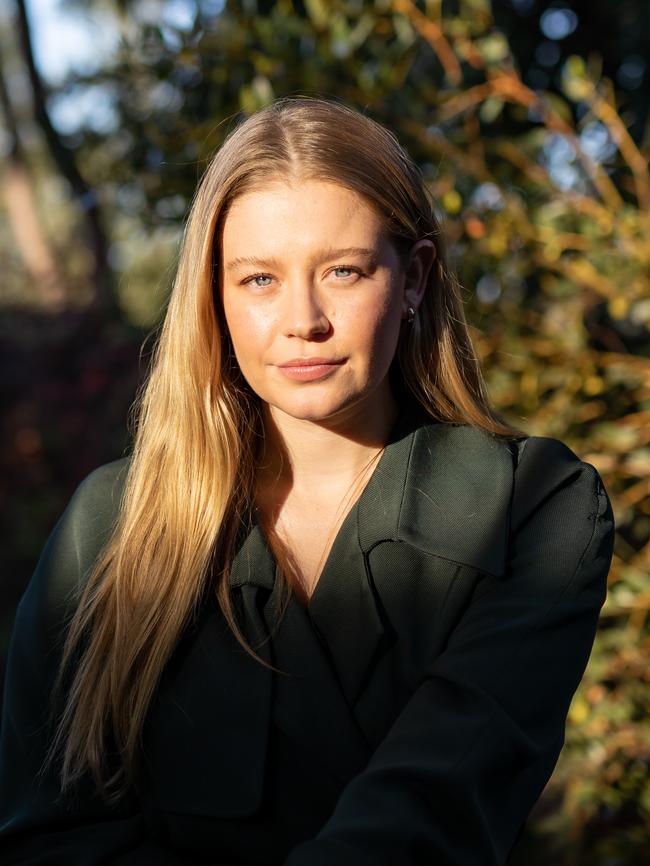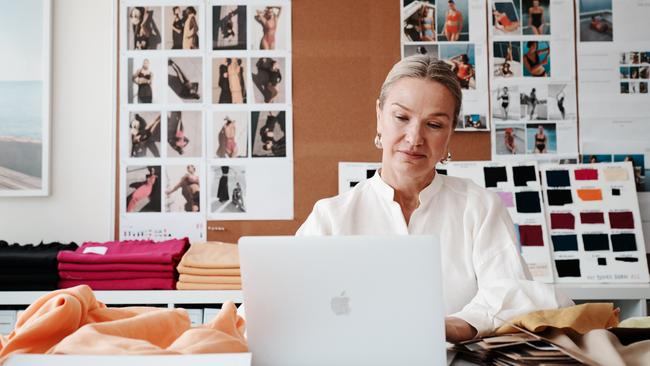Will a ‘fashion tax’ fix our overconsumption problem?
As the world’s top fashion consumer per capita, Australia must make strides towards a more sustainable fashion future. Can the Seamless scheme, in partnership with the Australian Fashion Council, offer hope?

Australia’s fashion habits are leaving the country’s sustainability efforts hanging by a thread. The Australia Institute think tank recently revealed that we have overtaken the United States as the world’s top consumer of fashion per capita — with Aussies buying an average of 56 new clothing items annually at $13 per item. One response to help drive the nation towards a more sustainable fashion future is the Seamless Clothing Stewardship scheme, launched by Environment Minister Tanya Plibersek in 2023. It became operational on July 1.
The initiative, in partnership with the Australian Fashion Council, aims to tackle the sector’s environmental and ethical challenges. It follows recent global efforts such as France’s tax on fast fashion. The Australian focus is on fostering a circular economy, including finding ways to use, reuse and recycle clothing.

According to Ainsley Simpson, chief executive officer of Seamless, “Seamless aims to make Australian fashion and clothing truly circular by 2030.” Under the scheme, which operates on a voluntary basis, brands who partake will contribute $0.04 for each new garment placed on the market or $0.03 for garments meeting specific sustainability criteria. These eco-modulated levy payments hope to incentivise the use of sustainable materials and extend the life of clothing.
However, the scheme has faced criticism around the sufficiency of the four-cent levy, infrastructure for recycling and its voluntary nature. “The model was built to evolve over time and, as we make progress and deliver positive outcomes, we can consider adjustments based on credible data and evidence,” says Simpson.
Tanya Plibersek has said that if the scheme isn’t taken up sufficiently by the industry she is ready to regulate it.
Over 60 brands are on board so far, including Big W, Carla Zampatti, Cotton-On, Oroton, Sussan Group and Zimmerman.
France’s law on fast fashion plans to impose increasing penalties of up to €10 ($16) on each piece of fast fashion sold by 2030, and aims to highlight the industry’s significant environmental impact and dissuade its low-price attractiveness.
However Jaana Quaintance-James, chief executive of the Australian Fashion Council (AFC), says the details of it are still unclear.
“[T]herefore it is hard to assess what its impact will be on both consumers and business,” she says.
Quaintance-James believes focusing on Australia, and Australian-made garments is key to success.
“The AFC believes there is a more immediate need and opportunity in Australia to ensure that there is a level playing field for Australian businesses and that all fashion businesses delivering to consumers here are meeting our current local tax obligations,” she says.
“Furthermore, there is an opportunity to better promote the value to the Australian economy and society more broadly of buying from Australian founded and majority owned fashion businesses. We — Australian consumers and businesses alike — can do a lot more to celebrate, preference and invest in our Australian industry by buying locally made or designed, and in doing so, playing a role in protecting and growing Australian jobs and economic value. This is absolutely critical, especially during these challenging economic times.”
Grace Forrest, founding director of international human rights group Walk Free, adds that while measures like the French are taking are impactful, they also have limitations. “France’s proposed tax highlights the industry’s significant environmental impact and dissuades its low-price attractiveness. However, such a levy not only unfairly burdens consumers but also fails to proactively protect the people making these products,” she explains.

Forrest says initiatives like Seamless need to consider the overall picture of how a garment is made. “The Seamless clothing stewardship scheme is a promising step towards promoting environmental sustainability in the fashion industry but needs to go further in addressing human rights,” she says.
Globally, 50 million people are currently living in modern slavery. “Slavery” is an umbrella term for different types of highly exploitative practices where one person is exploited by another for personal or financial gain. This includes human trafficking, forced marriage and forced labour. Fashion remains one of the worst offenders.
Despite the popularity of fast-fashion giants like Shein, Forrest stresses the hidden costs of ultra-low prices: “Such low prices should demand the question: who is paying the true cost?”
Dale McCarthy, chief executive and founder of Australian designer fashion label Bondi Born understands the complexities and necessities of maintaining sustainable and ethical practices in the fashion industry. “Operating sustainably and ethically takes effort and will generally be more expensive — doing the right thing often is — but it’s absolutely not that complex,” says McCarthy. At Bondi Born the emphasis is on selecting the right fabrics and ensuring ethical labour practices.” The biggest barrier to brands choosing this path is that sustainably and ethically grown, harvested and milled fabric is more expensive. Polyester fabric from China can be as little as 70c per metre, while silk and linen can cost upwards of $30 a metre,“ she says. McCarthy argues that the environmental benefits and ethical considerations make it worthwhile despite the higher costs.

Bondi Born has recently been recertified as a B-Corp, an accreditation awarded for high standards of performance in social and environmental practices, transparency and accountability.
McCarthy says the certification provides credibility to their sustainable operations, earning the trust of their staff, retailers, and customers. The certification process has not only guided the brand’s operations but also led to continuous improvements. “Increasing our score from 88 to 95 is a testament to the work our team has done to uphold the code of conduct and find new ways to tweak and improve how we operate,” she adds.
Despite McCarthy viewing the Seamless Clothing Stewardship scheme as a positive step, she doesn’t see the need for Bondi Born to participate. “I’ve looked at it, and I think it’s amazing to help turn the tide on companies that don’t operate sustainably. However, I don’t think Bondi Born needs to pay a levy to offset the waste of larger companies who are the issue,” she says.
Meanwhile designer fashion rental platforms such as The Volte are finding innovative ways to promote sustainability and reduce the fashion industry’s environmental impact. The Volte, which has partnered with the Seamless collective, collaborates with Australian fashion brands to integrate them into the circular economy. Through partnerships, brands can list their items for rent, earning royalties each time one of their designs is rented. “We have already seen our partners earn more from the rental royalties than they did from the original sale of the garment,” says Bernadette Olivier, chief executive and co-founder of The Volte.

Simpson believes the future of fashion in Australia looks promising, but will require ongoing effort from all stakeholders to make real progress. Seamless will publicly report its activities and outcomes annually, providing clear progress metrics on brand participation, circular design principles, changes in consumer behaviour, and waste reduction.
Forrest shares a hopeful outlook for the future of sustainable fashion in Australia, emphasising the need to protect both the planet and the people who make our clothes. “My hope is that sustainability in fashion captures both protecting the planet and the people who make our clothes. I envision ethical production becoming the norm in Australia’s fashion industry, not the exception,” she says.
“Businesses could, and should, absorb the cost to ensure that workers in the supply chains of big Aussie brands earn a living wage. None of us should be able to buy something that robbed another human being of their most basic human rights.”
Quaintance-James agrees, adding that more than the take-up of Seamless is required.
“Seamless benefits all of us, both business and community alike. However, there is much more beyond Seamless and circularity that needs to be done. The AFC believes we also need to focus on responsible planning and ordering, and supporting brands to better predict customer preferences to avoid overproduction,” she says.
“We also see the need for greater access to tools that measure impact in terms of carbon, water and textile waste, in consistent ways to inform credible change by industry and greater understanding among consumers. We’re looking for the right partners who believe in our mission and share our values to really help the industry make that shift.”



To join the conversation, please log in. Don't have an account? Register
Join the conversation, you are commenting as Logout